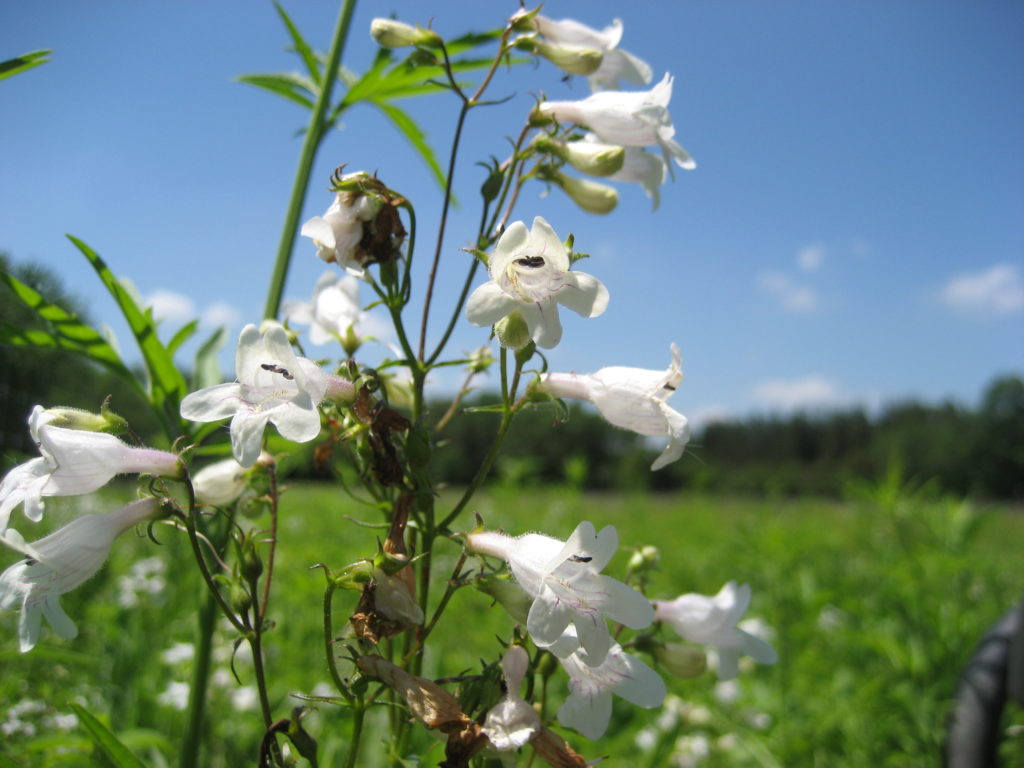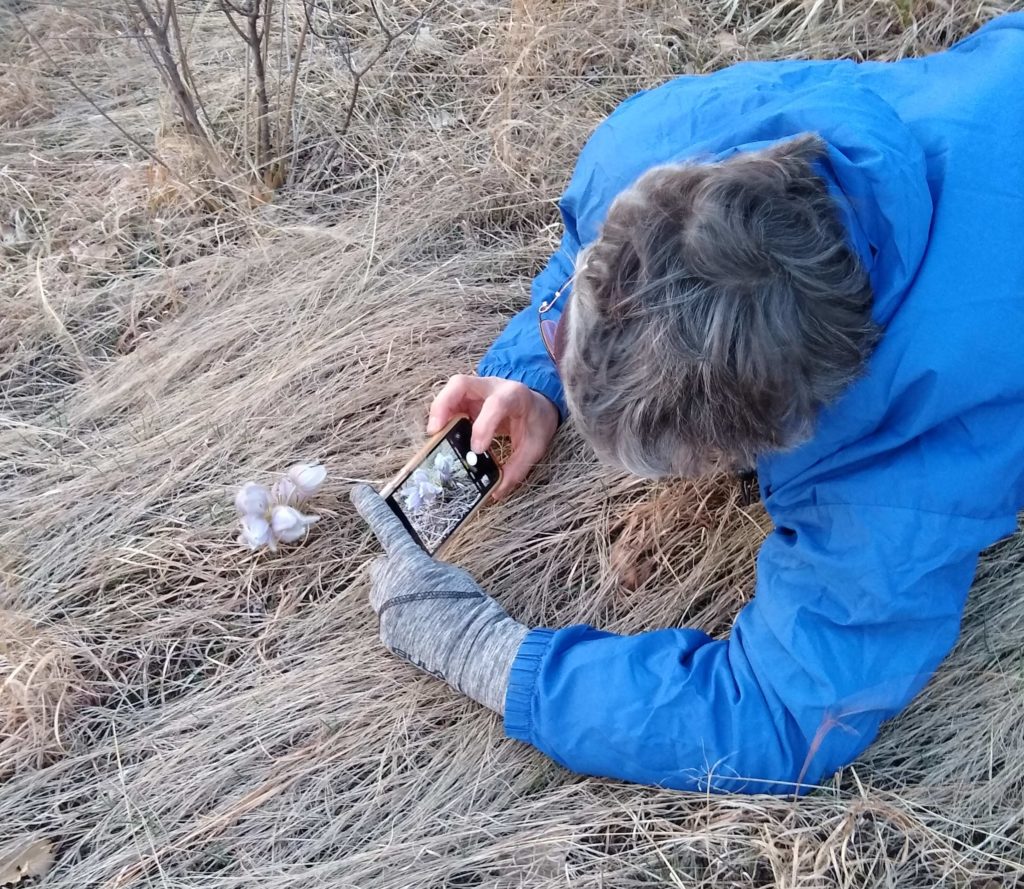Learn more about the plant and animal life that call Belwin home in the summer
“Earth laughs in flowers”
– Ralph Waldo Emerson
Hot days, bright sun, warm breezes, birds on the wing, blooming flowers… these are the days that many of us live for. It’s summer in Minnesota and we are gleeful about getting outside!
It is a supreme joy to leave the house in shorts, a T-shirt, hiking boots or sandals, a hat and maybe a water bottle and walk unencumbered on the many trails around us.
Stagecoach Prairie at Belwin Conservancy is one such grand place to hike right now. It’s a feast for the eyes and a balm for the spirit. Here you can listen for the whispers of birds and flowers, absorb the waves of wind, laugh out loud, and find peace for your soul.

Here are a few things to look out for on your next visit!
White! White! White!
- Foxglove beardtongue (Penstemon digitalis) – A native in dry woodlands or sandy parts of the tallgrass prairie, these spectacular blooms look like a swaying blanket of white. Look for them on all parts of Stagecoach but particularly in the area between Coneflower and Butterfly trails.
- Northern Bedstraw (Galium boreale) – This white native is a sprawling plant with tiny, saucer shaped flowers. As the name implies, these plants were once used as a filler for homemade mattresses. Because the bristles make the branches stick together the mattress remained a uniform thickness. Look for these large mats along the Butterfly trail.
- Common Yarrow (Achillea milefolium) – Named after the warrior Achilles, this plant has been used by many cultures in folk medicine for things like fever, loss of appetite, stomach distress and also to heal bruising. These flat-topped blossoms are hard to miss and, right now, can be found at any trail at Stagecoach.
And some that are less desirable!
- Grecian Foxglove (Digitalis lanata) – This plant is on the eradication list of the Minnesota Department of Agriculture. A native to central and southern Europe, it was brought here as an ornamental, before it escaped into the wild. Without any diseases, bacteria, or natural predators, it has flourished. Thankfully, it is presently restricted to central and northern Washington County, as the plant is toxic to wildlife and livestock. Though beautiful looking, it can be harmful to humans as it contains high levels of digitoxin, an ingredient in heart medications. On certain days, you will see volunteer groups hand pulling this invasive over the next few weeks.
- Birds foot Trefoil (Lotus corniculatus) – It’s hard to miss these mats of yellow as you walk along the Belwin trails. Native to Europe, it was introduced as a livestock forage plant and also used for erosion control. These dense mats choke out and shade other desirable, native species.

Phenomenal Flyers at Belwin
- Eastern Bluebirds (Sialia sialis) – Stagecoach Prairie hosts one of Belwin’s two Bluebird trails. Look for the nest boxes that resemble birch trees. Bluebirds are cavity nesters, historically using holes in trees excavated by woodpeckers. Due to habitat loss, these birds have suffered population declines for a number of years. The creation of houses or nest boxes that offer a cavity have proven to be a big help to these delightful flyers. The first clutch of baby birds have fledged (flown out of the nest) and a second nesting may be underway!
- Tree Swallows (Tachycineta bicolor) – Another cavity nester and also an aerial insectivore. Watch these birds dive and soar as they grab insects out of the air! Look for the white bellies and iridescent blue backs.
- American Kestrel (Falco sparverius) – Look for the tall pole with a nest box on it and you may see the smallest member of the falcon family sitting on top. Kestrels are another cavity nesting bird whose populations have been dropping in recent years. To help support increasing numbers, Belwin has two nest boxes. The Stagecoach box is home to several chicks right now. Be on the lookout for fledglings moving about soon!
These are just a few of the many things to see, smell, and hear on your next visit to Stagecoach Prairie. We hope you can pause on your walk and listen to the flowers. As Emerson tells us, “Earth laughs in flowers.” Feel free to laugh along with them this Summer — just for the joy of it!

Attend an upcoming event with Lynette as your guide! Visit our events page for more information.